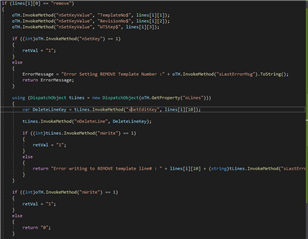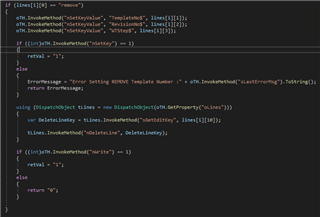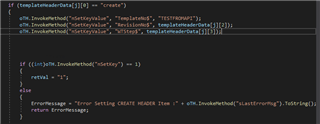Hey everyone!
I'm attempting to modify and create/remove work ticket templates via BOI (through C# and Entity Framework) and I'm not having much luck. I'm not sure what object the template table is a part of and I haven't been able to find anything specific to updating templates on the web or here.
For reference I'm working in Sage 100c Premium 2018 (6.00.10.0) and here is a snipped of the code:
Any help would be greatly appreciated!




